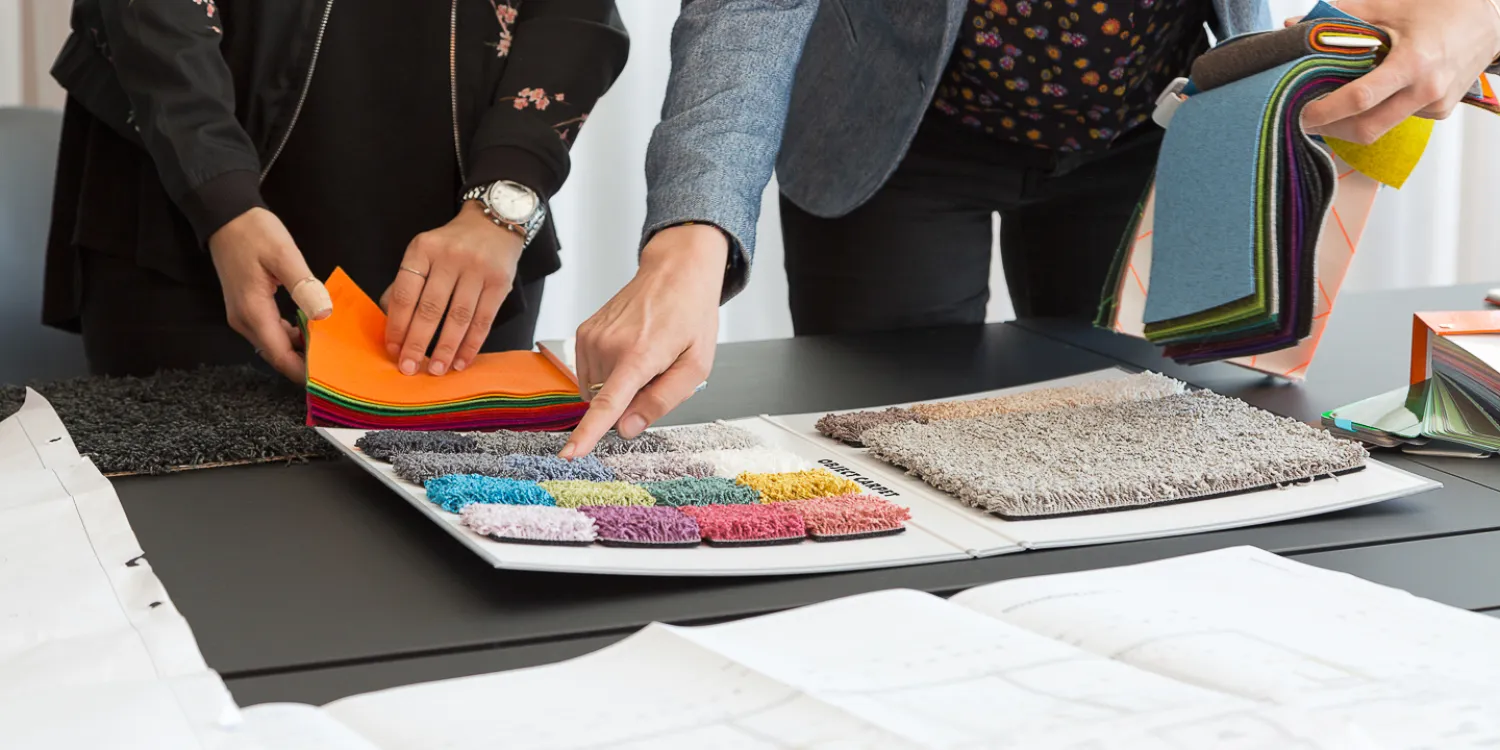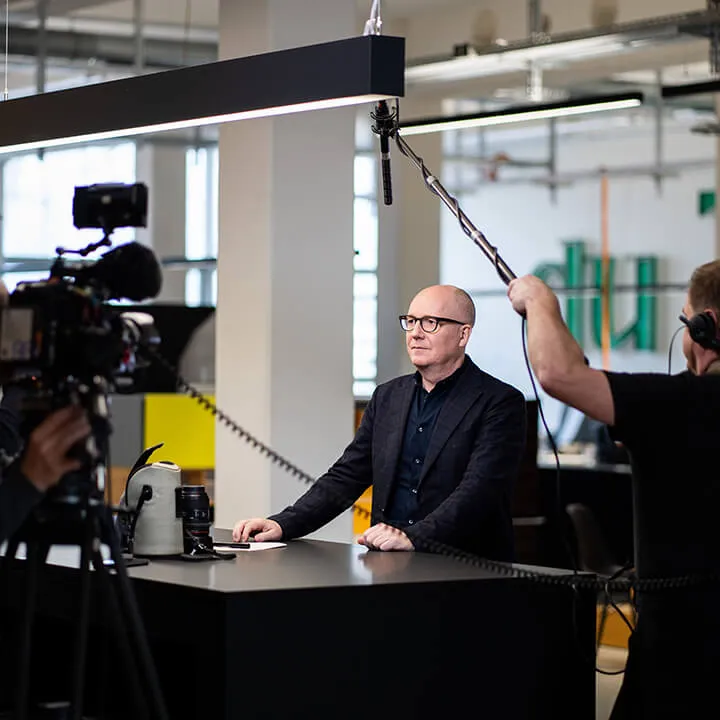Environmental protection and running a business are compatible
CSMM founder Timo Brehme talks to the German Sustainable Building Council [DGNB – Deutsche Gesellschaft für Nachhaltiges Bauen}:
"We want to demonstrate that environmental protection and running a business are compatible"
written by Henny Radicke
The way we plan and operate our buildings offers enormous potential for saving climate-damaging CO2 emissions. However, to fully exploit this potential, it is important to take an honest, systematic look at our own consumption. DGNB member CSMM – architecture matters has implemented exactly this for its own company. Timo Brehme, founder and managing partner, reports on the motivations, experiences and insights. The original interview has been published on: blog.dgnb.de/en/interview-csmm-co2/.
We want to demonstrate that environmental protection and running a business are compatible.
We want to advance developments that seem right and important to us as quickly as possible.
Timo Brehme, Founder and Managing Partner of CSMM – architecture matters
Henny Radicke (HR): You have had determined the CO2 balance of your own company. Why?
Well, we are curious. From a professional point of view, we are concerned with the question of how we will work tomorrow. How do we shape the future world of work? This includes: How do we shape the future of our environment? We want to advance developments that seem right and important to us as quickly as possible. And the urgency is more apparent than ever.
By sponsoring the environmental protection foundation Wilderness International, we have been protecting 6,400 square meters of temperate rainforest in Canada every year since 2016. We are pleased to make a concrete contribution to saving the untouched wilderness of Toba Valley.
We also encourage our clients to build, rebuild and expand in a climate-neutral manner by partially offsetting the CO2e emissions generated by their construction activities. For the interior design of office and administrative buildings, this approach still represents a novelty in the industry today.
Recently, the foundation carried out scientific studies in cooperation with the Helmholtz Center for Environmental Research in Leipzig to determine how much CO2 this species-richest forest in the northern hemisphere binds. When Wilderness International offered to balance the ecological footprint of our company, we took the opportunity.
As an active member of the DGNB, it was quite natural for us in the executive board to tackle the climate problem at our own company and calculate our ecological footprint.
Now we hope for imitators. We want to demonstrate that environmental protection and running a business are compatible. Not all emissions are avoidable, but they can at least be compensated by, among other things, preserving intact natural areas.
HR: How did you go about it? And what did it mean for the employees?
The foundation and environmental protection organization Wilderness International uses the recognized system of emission factors for calculation. These allow the quantity of greenhouse gases in CO2 equivalents (CO2e) to be calculated on the basis of given consumption values, such as electricity consumption in kilowatt hours. Two colleagues collected data for the four CSMM sites on heat and electricity, equipment inventory, printing and shipping, cleaning and waste, food and water as well as events. The topic area of mobility also includes accommodation on business trips. In addition to their mobility in day-to-day business and on business trips, each individual employee also contributed his or her respective work routes, i.e. means of transport, distance and number of working days.
Wilderness International used this information to precisely calculate the actual consumption of nature: on average, 4.9 tons of CO2e emissions per employee. In a presentation, we illustrated the results and clarified the correlations. As a result, colleagues also know how important environmental protection is to us and how interested we are in their suggestions for improvement.
HR: With regard to the result: Are there any areas that surprised you in particular? Both positively and negatively?
Since we not only examined the office space, but also other criteria such as mobility, the pie chart surprised us in its proportions.
We were pleasantly surprised to find that we performed very well compared to other companies our size, especially in terms of electricity, heating and cooling consumption. Our choice of location certainly played a crucial role in this: our two largest offices in Munich and Frankfurt draw their energy from the building’s own combined heat and power plants, which provide not only electricity but also the heating and process water heat. In Düsseldorf and Berlin, we share infrastructure and office space with other users – co-working as a resource-saving way of operating.
Furthermore, all offices have very good connections to local and even long-distance public transport and enable climate-friendly mobility.
This time, however, a relatively high CO2e emission has resulted for the inventory, because the entire IT hardware in use is recorded once during the first recording, independent of the year of purchase.
According to that, the forest sponsorship not only compensates for our emissions – we work in a climate neutral manner, so to speak – but also makes a concrete contribution to offsetting other environmental impacts.
HR: Based on the results, what concrete measures do you conclude in regard to the company and its locations?
We had already set the course with the choice of locations. In addition, we consciously chose existing buildings to conserve resources. Last but not least, those who rebuild instead of constructing new buildings avoid CO2-intensive cement production simply by eliminating the need for concreting. In 2016, for example, we rented loft space for the new Munich office in a former factory building in the revitalized “Werkviertel”. The roof will be greened and even grazed.
For our design, we developed new ways of thinking about how to work together effectively and harmoniously. In doing so, we wanted to create the basis for environmentally friendly behavior and an inspiring work environment in which employees feel comfortable and can develop their potential. Because space influences everything – from motivation to processes.
Now we are drawing up an action plan to make us even better. For example, we have already converted almost all areas to eco-certified products, traveling employees receive a „Bahncard“ from the company, etc. We are now further developing our existing concept to determine where we can actively take action and how we can change our behavior.
HR: Are there other guidelines that you formulate for yourself?
As architects and designers of tomorrow’s environment, it is our heartfelt wish to create what we create in a truly sustainable way. The urgency is more apparent than ever. Although ecological awareness is increasing, the mistakes are growing more rapidly. Regarding consistent actions such as the cradle-to-cradle principle or climate-neutral buildings, we are still at the very beginning in Germany.
The entire sustainability aspect must be given much more attention in the real estate industry. In addition, sustainable solutions also result in immense advantages for the owners, project developers and tenants of a property. A huge amount of educational work is still required. This is where we are in demand as consultants and planners: for a few years now, we have been actively trying to create awareness among our customers in personal discussions. We are developing our planning services in stages towards “sustainability as standard”. For example, we produce a “black list” of products that we consider outdated, and gradually replace them with contemporary alternatives that we demand in tenders, so that manufacturers and partners on the construction site can also improve their offerings as a result of increasing demand.
That is why we are pleased that the DGNB is so active, and we were happy to participate in the production of the criteria catalogues for office and administrative buildings as well as for interiors. We will support the initiative “Phase Sustainability” of the Federal Chamber of Architects and the DGNB.
As planners, it is our interest to give impulses and initiate processes that improve the working environment. In order to optimize processes and structures sustainably, we have to change established routines and find or invent solutions that are currently missing. We also want to promote these innovations with our spatial planning and plead for the office as a space of opportunity.
And if possible, we start with ourselves.
by Henny Radicke

Henny Radicke
Henny Radicke is a member of the editorial staff at the DGNB in the PR department and is also responsible for Social Media. A period of voluntary work for a local TV channel in Stuttgart and a stint with the communication department at the Baden-Wuerttemberg Foundation have allowed Radicke to develop an eye for the issues and stories that appeal to specific target groups, leveraging communication as a multifaceted instrument.

